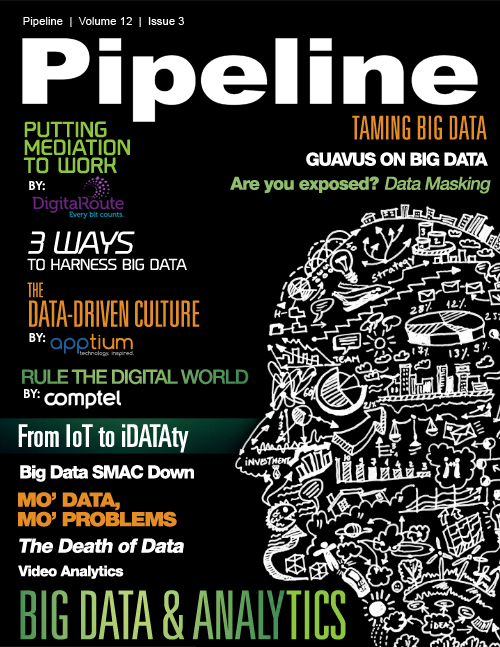Harnessing Big Data: 3 Use Cases
By: Jay Klein

With the rise of social media, the proliferation of devices and new network rollouts, consumers are continually increasing their use of applications and video streaming. These elements are all driving exponential growth in the volume and breadth of big data available to communications service providers (CSPs), which can be seen as both a challenge and an untapped gold mine.
Given the sheer volume and many types of data that are being collected, the labor needed to source and manage that data alone inhibits organizations and CSPs from finding the value in the data or being able to monetize the insights. The challenges come disguised in many ways - whether it’s the excessive amount of time required to access and extrapolate the data, the lack of data science and analytic expertise within an organization, or the cost alone of data warehouse requirements, business intelligence (BI) tools, human processing, and other costs associated with effective data analytics.
As today’s climate continues to evolve and become more data-driven, service providers need to gain more real-time access to their data and understand it faster, all while sharing those insights to internal users and third parties for additional in-depth analysis. Network data, and in particular over-the-top (OTT) application traffic that is used by the technical teams, can be used by many other functions in the organization such as business, security, or even marketing teams. When properly harnessed, analysis of this data has the potential to increase profits, deliver new services and differentiate from competitors. But how do you get there?
Service provider operations and engineering departments will be able to use network analytics to achieve unprecedented network and application visibility and then harness this data to optimize network planning, issue detection and more. More specifically, service providers can capture and analyze a rich variety of application, subscriber, device and quality of experience (QoE) data from their own networks, and then transform the source data into valuable BI that is needed to drive service profitability and customer satisfaction.
Telco big data and analytics has the ability to transform business operations in a multitude of ways from network performance and optimization, to threat intelligence, to subscriber engagement and QoE. Let’s take a look at each of these use cases.
Network performance and greedy applications
Subscribers always want to be connected to the plethora of applications they download onto their phone. But when their connection slows or their phone battery starts to plummet - their first stop for complaint will likely be their operator. The problem in this scenario is typically caused by the applications themselves, which the operator has no control over.
Many mobile apps are constantly running in the background as they frequently check for updates or collect data, already generating a higher level of signalling traffic due to the frequent connection requests. Furthermore, a lot of these applications tend to burst, meaning they rapidly expand to consume a great amount of bandwidth on the operator’s side. This will directly impact the subscriber’s QoE which, again, is directly blamed on the service provider.
Leveraging actionable network analytics, operators can identify traffic trends, detect and observe abnormal bandwidth consumption from specific applications, and gauge the effect it will have on network performance. Take Snapchat for example. When the popular app started supporting HD video chat, the bandwidth usage of the app soared. Within two weeks Snapchat jumped to the top 15 applications in terms of bandwidth usage.





















